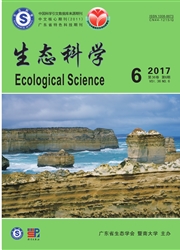

 中文摘要:
中文摘要:
通过对大亚湾海域初级生产力及浮游动物次级生产力的现场调查数据,对该海域潜在渔业生产量及最大可持续渔获量进行了评估。结果表明,大亚湾春季及秋季初级生产力平均值分别为765.23mgC·m^-2.d^-1和1786.33mgC·m^-2.d^-1,浮游动物次级生产力春季及秋季平均值分别为175mgC·m^-2.d^-1和679mgC·m^-2.d^-1采用Tait模式和Cushing模式估算的大亚湾潜在渔业产量分别为3.30万吨和4.78万吨。数据分析结果表明,基于基础生物生产力的评估方法很可能高估了该海区的实际渔业产量,这与基础生物群落结构的改变密切相关:高生物多样性及生态系统结构与功能的健康性是维持渔业资源产量与质量的重要基础。
 英文摘要:
英文摘要:
Based on the in situ investigations on primary production and secondary production in the Daya Bay, the potential fishery production and the maximum sustainable yield in this region were estimated. The results showed that the average primary production in the Daya Bay were 765.23 mgCm^-2.d^-1and 1786.33 mgCm^-2.d^-1 in spring and summer respectively, and the average secondary production were 175.23 mgC.m^-2.d^-1and 678.95 mgCm^-2.d^-1 in spring and summer respectively. The potential fishery production based on the Tait's model and the Cushing's model were 3.30-104 ton and 4.78×104 ton respectively. Further analyzing results showed that changes of community structure in basic trophic levels may lead to overestimate the actual fishery production in the bay when basic biological productions were used to the estmiations, high community biodiversity, healthy ecosystem structure and function should be the primary basis for sustaining quantity and quality of the fishery production.
 同期刊论文项目
同期刊论文项目
 同项目期刊论文
同项目期刊论文
 Chemometric study of spatial variations of environmental and ecological characteristics in the Zhuji
Chemometric study of spatial variations of environmental and ecological characteristics in the Zhuji Potential risk of Mesodinium rubrum bloom in the aquaculture area of Dapeng';ao cove, China: diurnal
Potential risk of Mesodinium rubrum bloom in the aquaculture area of Dapeng';ao cove, China: diurnal Summertime primary production in northwest South China Sea: Interaction of coastal eddy, upwelling a
Summertime primary production in northwest South China Sea: Interaction of coastal eddy, upwelling a Harmful algal blooms (HABs) in Daya Bay, China: An in situ study of primary production and environme
Harmful algal blooms (HABs) in Daya Bay, China: An in situ study of primary production and environme Occurrence of brackish water phytoplankton species at a closed coral reef in Nansha Islands, South C
Occurrence of brackish water phytoplankton species at a closed coral reef in Nansha Islands, South C Monsoon-forced distribution and assemblages of appendicularians in the northwestern coastal waters o
Monsoon-forced distribution and assemblages of appendicularians in the northwestern coastal waters o Two functionally distinct ciliates dwelling in acropora corals in the south china sea near sanya, ha
Two functionally distinct ciliates dwelling in acropora corals in the south china sea near sanya, ha 期刊信息
期刊信息
